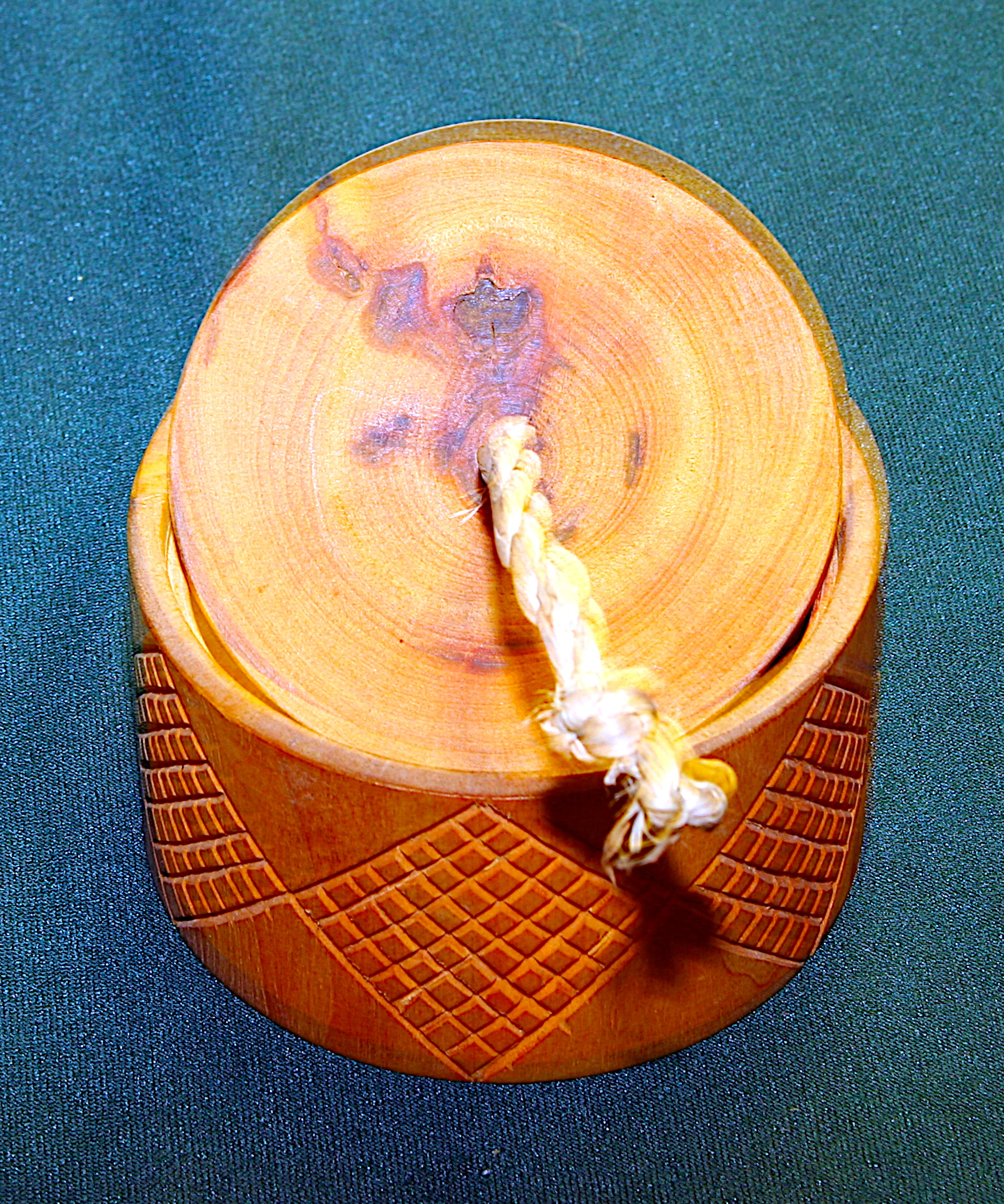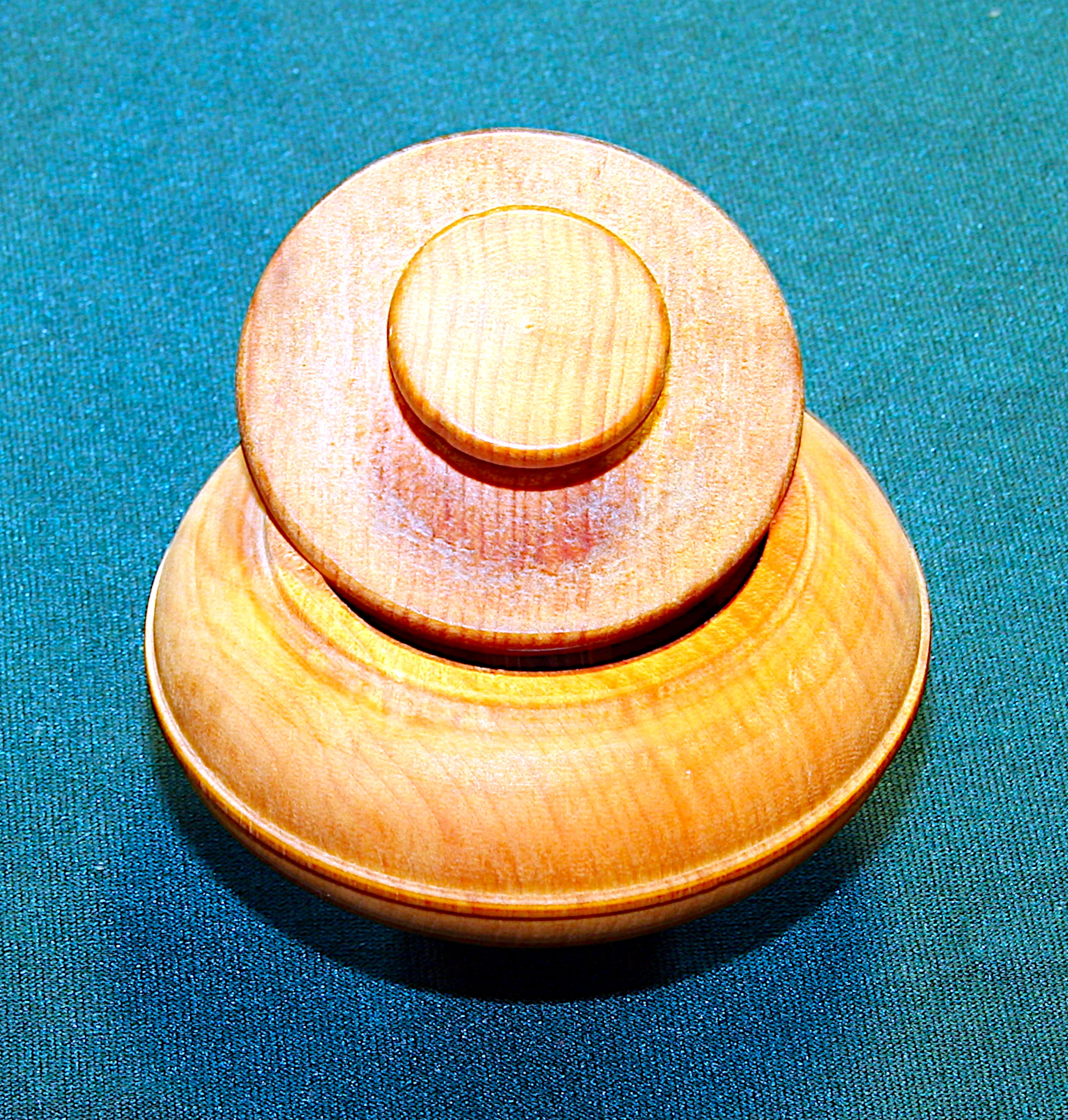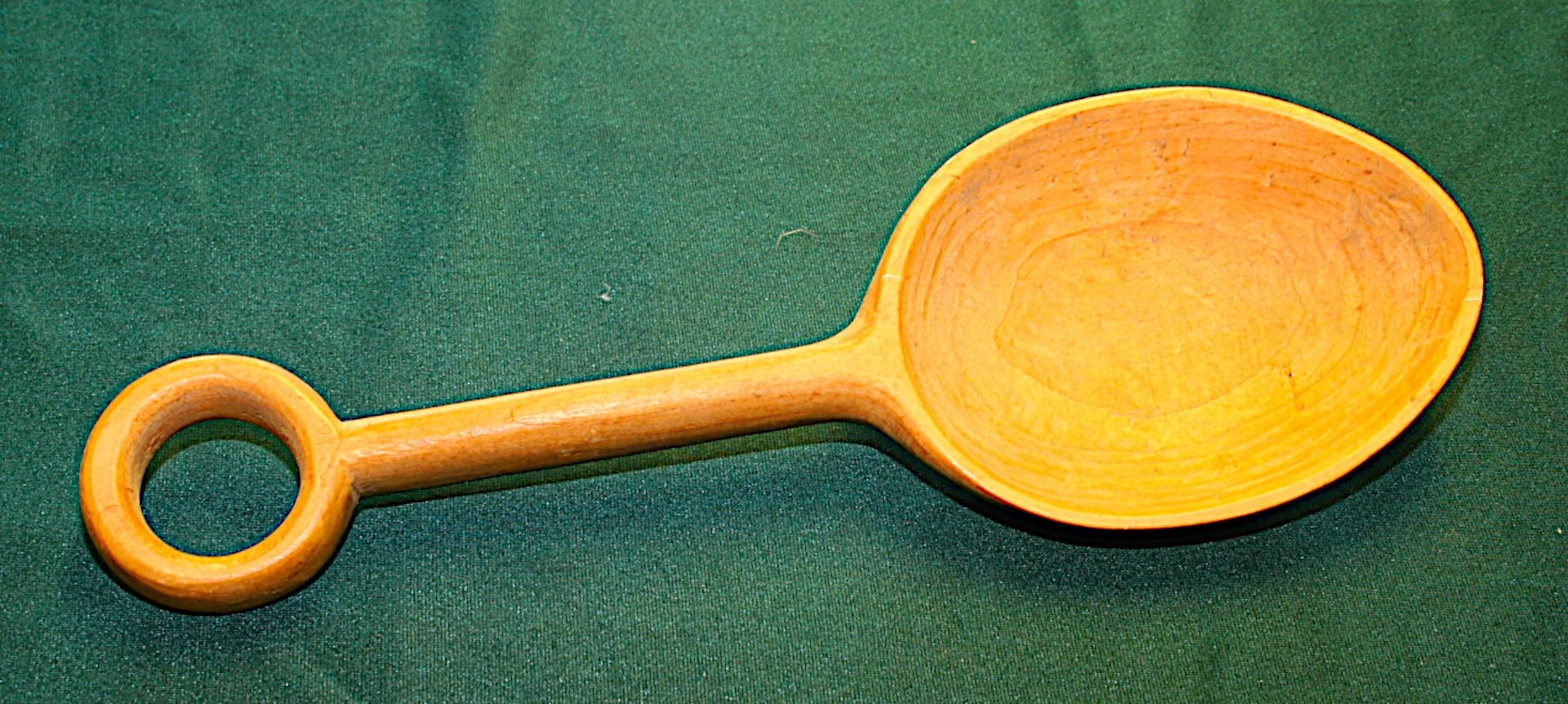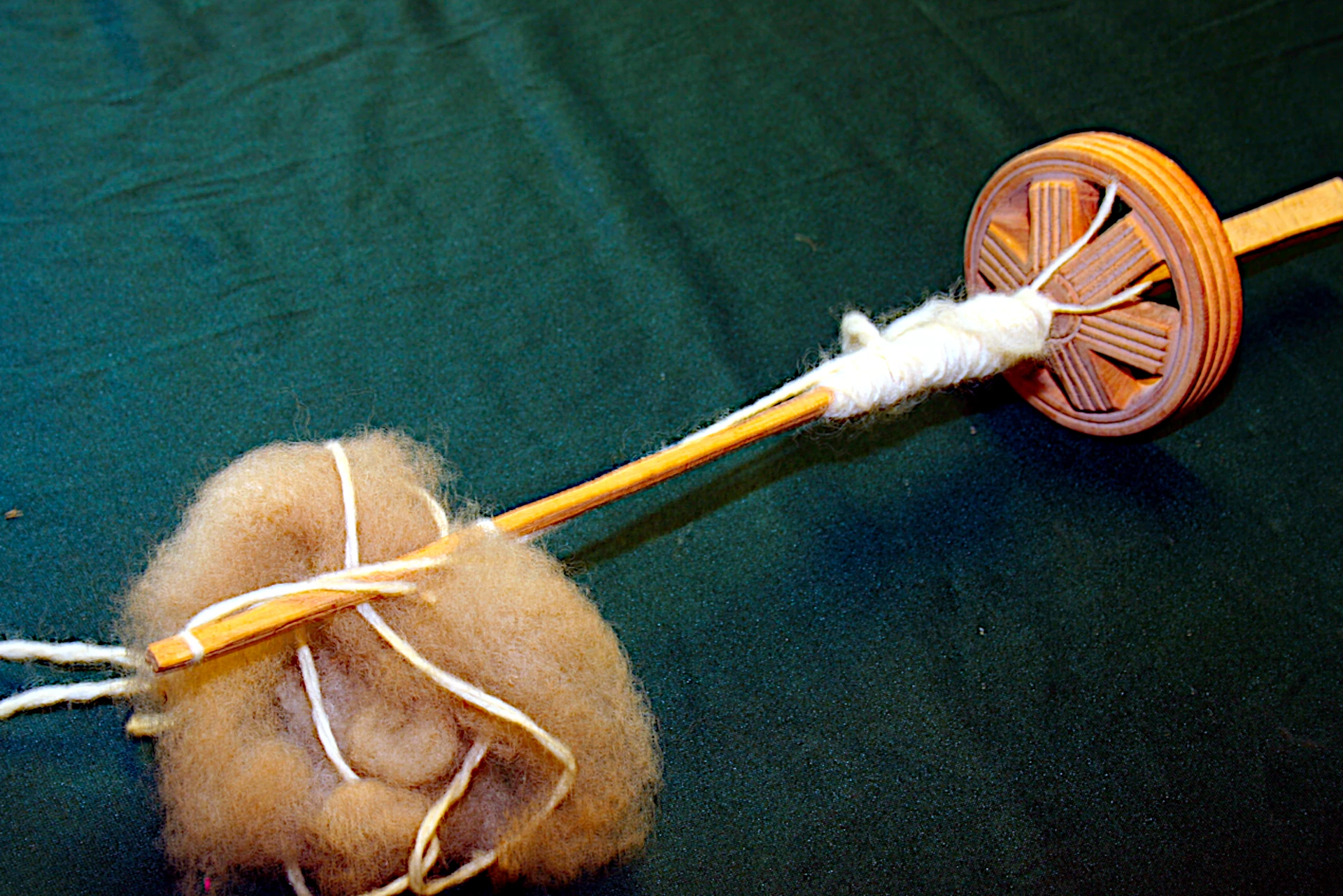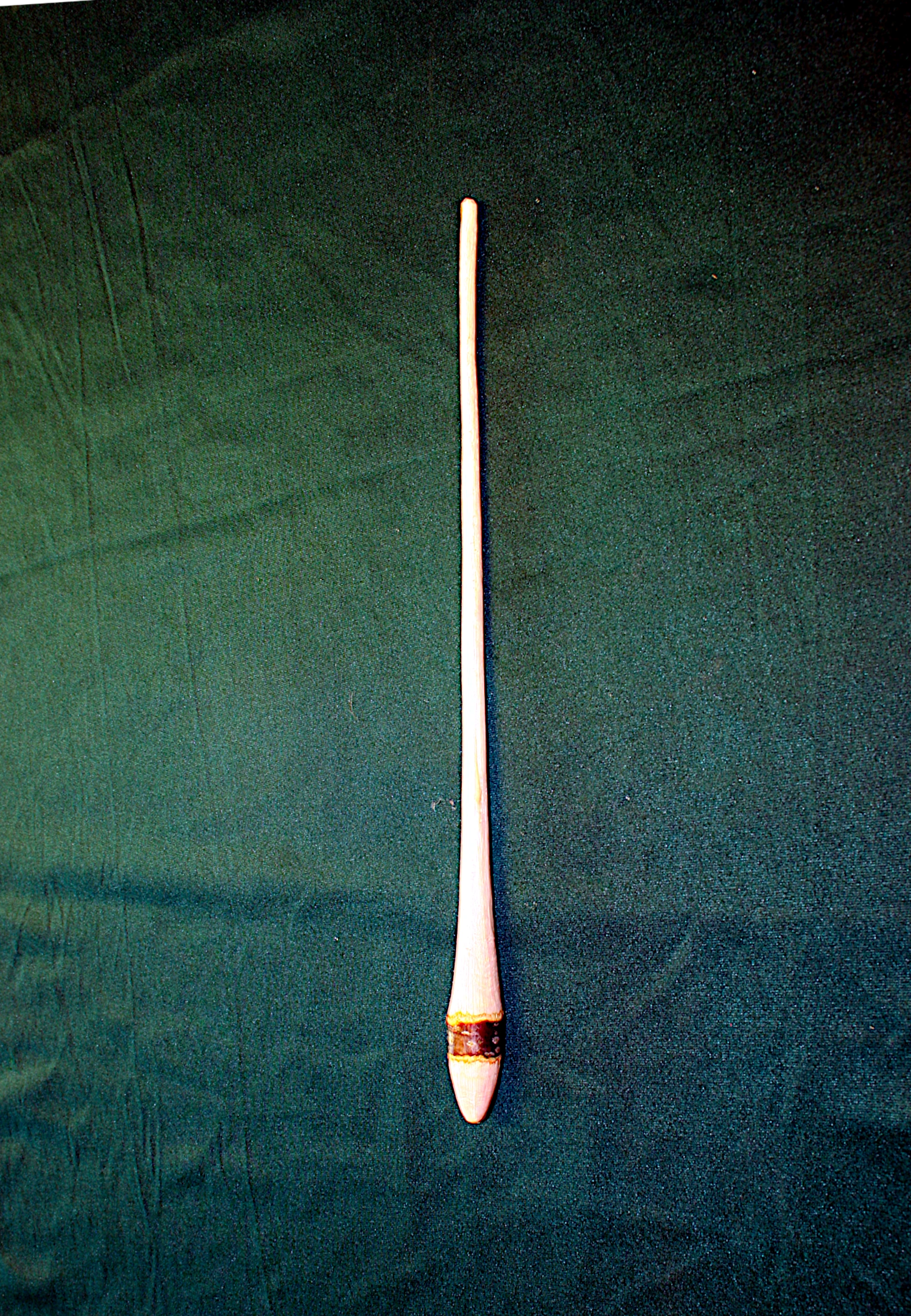The Hjortspring find contained many different parts that could not be attributed to being part of the boat or its armament, but were probably tools for personal use.
We have made copies of some of these. These parts are labelled with a museum number, such as #534 (wooden box).
A more detailed description of some of the parts can be found in the section Redskaber og Husgeraad m.m. in: Hjortspringfundet.
Personal equipment
Turned cans
These tins are among the oldest turned parts found in northern Europe. Similar, in shape, cans made of clay are known.
Cylindrical box with flat lid.
The diameter is 100 mm, height 55 mm and wall thickness 8 mm. There is a turned groove at the bottom and top for the base and lid respectively, the latter has a square hole in the centre.
The outside of the box is decorated with diagonal incisions.
Small turned lidded box with ridges at the bottom and on the lid.
The diameter of the can is 90 mm, the opening is 52 mm. The standing surfaces of the tops are 32 and 30 mm for the bottom and lid respectively.
The tin is decorated with a band all the way round.
Similar to can #535, but with turned mouldings spaced 10 mm apart on both body and lid.
However, the spigot at the bottom is only 10 mm high, while the top is 30 mm high.
The diameter is 100 mm, the opening 68 mm and the height is approximately 68 mm.
Small low turned wooden box.
The diameter is 95 mm, the opening is 60 mm and the height is 45 mm.
The box is decorated with 3 mouldings on the lid and on the bottom.
For the culinary
Consists of an oval bowl-shaped spoon blade that is 150 mm long and approximately 110 mm wide. The shaft is 10 mm on one side and 25 mm on the wide side and, including the eye, 180 mm long. The eye is externally Ø60 mm with a Ø36 mm hole.
Not manufactured yet, waiting for the wood to dry.
Porridge bowl (5)
Not manufactured yet, waiting for the wood to dry.
Textile tools
A wheel-shaped, carved, disc. It is between 90 and 97 mm in diameter and 35 mm high.
The wheel is fitted with 6 ‘spokes’ that extend from a ‘rim’ that is 15 mm wide with a groove in the centre.
The upper side of the ‘spokes’ is cone-shaped from the inside of the ‘rim’ and has 3 grooves. Where the ‘spokes’ meet in the centre, there is a square hole with an edge length of 7 mm.
The underside is also cone-shaped, parallel to the upper side. The edge is provided with radial close-sided grooves.
The outside of the wheel has 3 grooves.
The wheel was probably placed on a square peg.
Rosenberg suggests that it could have been a distaff -weight. We have taken this to heart, see the picture.
A carved hazel branch with a diameter of 20 mm and a current length of 320 mm. One end is conical until 25 mm from the end, where it continues in a 13 mm wide bark ring. Then the diameter decreases evenly until a diameter of 7 mm.
It is probably a dstaff stick for spinning thread of fine material.
- Circular wooden plates, one with a small handle. Another with a long handle, "pizza spade"?
This article was put together by Ib Stolberg-Rohr, feel free to write if you have any comments.
Notes and references
1. G. Rosenberg, Fig. 34, p. 63, tekst, p. 63
2. G. Rosenberg, Fig. 34, p. 63, tekst, p. 62
3. G. Rosenberg, Fig. 34, p. 63, tekst, p. 62
4. G. Rosenberg, Fig. 35, p. 64, tekst, p. 65
5. O. Crumlin, fig. 4.16, p. 157
6. G. Rosenberg, Fig. 34, p. 64, tekst, p. 67
7. G. Rosenberg, Fig. 40, p. 68, tekst, p. 68




